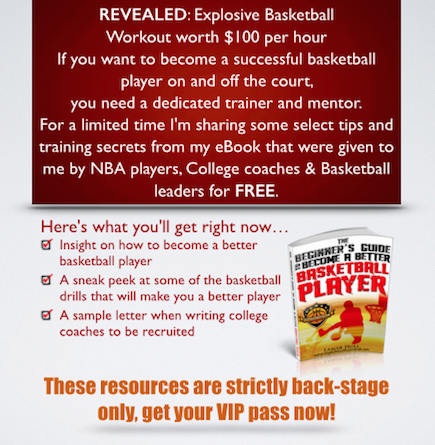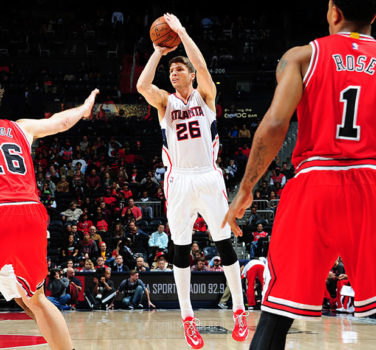Example Basketball Practice Schedule and Plan
Should you plan a youth basketball practice?
You absolutely should, because what I have learned from coaching young kids is that they need a little bit of structure that will help them get better and truly learn how to play the game the right way.
Playing the right way means, playing as a team. The next step is how you plan to structure your youth basketball practice schedule. Also, how productive, competitive, and fun you make your basketball practices can make a big difference in how your team competes in the game.
Depending on what level you are coaching, you have to walk through a lot of your sets. All the great coaches spend time walking through their defensive and offensive sets.
You don’t want to speed things up for a young team because they won’t actually get the true value of basketball fundamentals within a team environment.
Even if you have a highly talented team that is winning most of their games, or maybe your team hasn’t won any games yet, coaches must ensure that every practice session is well-planned and productive.
Before each practice, analyze how your team played in their previous game and focus on the things that your team struggles with and are good at. For example, if they average a lot of turnovers, focus on passing, if they struggle with defensive rebounds, focus on rebounding.
Whatever it is, make it a habit to work on those things. Also, work on your teams strengths. It is best to have a stat keeper for each game, so as a coach you can provide real insight to what the team is doing in game situations.
So, here are a few steps to help you with planning your next basketball practice! The first and most important thing for you is to evaluate the talent level of your team. Is your team fast, small, big, slow, poor passers, poor shooters, etc.
Depending on what level you are coaching, you have to walk through a lot of your sets. All the great coaches spend time walking through their defensive and offensive sets.
You don’t want to speed things up for a young team because they won’t actually get the true value of basketball fundamentals within a team environment.
Even if you have a highly talented team that is winning most of their games, or maybe your team hasn’t won any games yet, coaches must ensure that every practice session is well-planned and productive.
Before each practice, analyze how your team played in their previous game and focus on the things that your team struggles with and are good at. For example, if they average a lot of turnovers, focus on passing, if they struggle with defensive rebounds, focus on rebounding.
Whatever it is, make it a habit to work on those things. Also, work on your teams strengths. It is best to have a stat keeper for each game, so as a coach you can provide real insight to what the team is doing in game situations.
So, here are a few steps to help you with planning your next basketball practice! The first and most important thing for you is to evaluate the talent level of your team. Is your team fast, small, big, slow, poor passers, poor shooters, etc.
It’s in your interest to understand what you have up front so that you can organize your basketball practice plan in a much constructive way.
Obviously, a younger team would need more practice time to understand “fundamentals”, and an older and more experienced team can spend more of their time working on conditioning and set plays, but again, everything depends on the talent level of your team.
You have to also consider how much time you have to practice. A two hour practice is sufficient and will give you time to work on what is needed.
Initially, we started practicing for an hour, but that didn’t give us enough time to teach the kids and provide them with as much repetition.
So we extended our practices to 2 hours. That made a difference in their development and coming together as a team because they had more time together.
Sample basketball practice plan for young players:
* Dynamic warm up and athletic development work – (10 to 15 minutes) –
- Have your team warm up together and do the following stretches
- Jog 2 laps around the gym
- Have the players start on the baseline
- High Knees – have them run with high knees to the free throw line and back to the baseline
- Hamstring stretch – have them pull their knee to their chest, alternating knees. Free throw line and back to the baseline
- Slides – step and slide to the free throw line and back to the baseline. *this drill is performed in slow motion, to stretch the groin area*
- Leg Kick – kick your leg as high as you can, alternating legs. Free throw line to baseline.
- Quads – pull leg to your butt, alternating legs. Free throw line and back to the baseline.
- Arm Circles – circle arms counter clockwise and clockwise
I added 2 laps to your players’ warm-up. It’s good to have players jog 2-4 laps around the gym to warm up. That’s good for improving performance, preventing injuries and improving their athletic abilities.
Your basketball practice schedule should include some time of stretching. Instruct players to show up 15 minutes early to stretch/warm up so that the practice could start on time. In addition, teaching stretching to young players is great for their basketball longevity.
Stretching is included in my basketball practice schedule below because it is a requirement before we start practice.
Basketball Practice Description:
- Layup Completion Drill – For 5 minutes they have to make 80% of their layups on the right side and do the same thing on the left side for 5 minutes. If they didn’t they would have to run a few suicides. *getting young kids to make layups should always be a focus point, you will find out early this is what a young team will struggle with*
- Free Throw Completion Drill – Each player shoots 2 free throws and then rotates. They had to make 70% of their free throws collectively. *free throw shooting as a team should always be something a coach should focus on, if your team can shoot free throws at a high percentage, they can always be in the game*
This is an actual basketball practice schedule that I used for my 11-12 year old basketball team. If you can incorporate a scrimmage, whether it is amongst the team or an outside team, try to scrimmage every chance that you get.
The more opportunities the kids have to work on what they have practiced in a controlled game like environment will only benefit them in the long run. Another benefit, you can stop and teach them when necessary.
Don’t forget to cool down for about 4-5 minutes. This is important because you want to allow your players to discuss what they learned during practice. Some basketball teams do this immediately after practice.
You could also add some dynamic flexibility exercises. Avoid yoga and static stretching under the age of 12 for development purposes. One unique thing our team did was utilize a journal.
We would pick a captain for each practice and his assignment was to bring the journal back to the subsequent practice and provide what he thought that the team could improve on and what they are doing well.
This promoted leadership amongst the team and awareness of what teammates noticed as areas of improvements and what they did well.
Any basketball practice schedules or techniques that has worked great for your team?





LEAVE A COMMENT